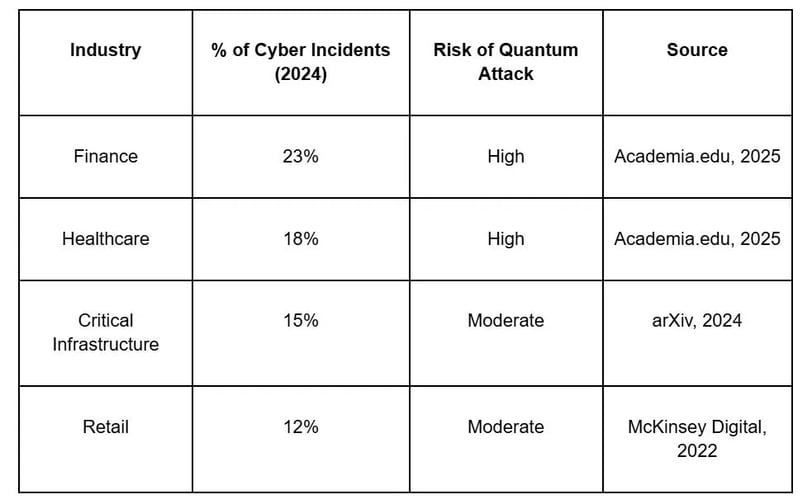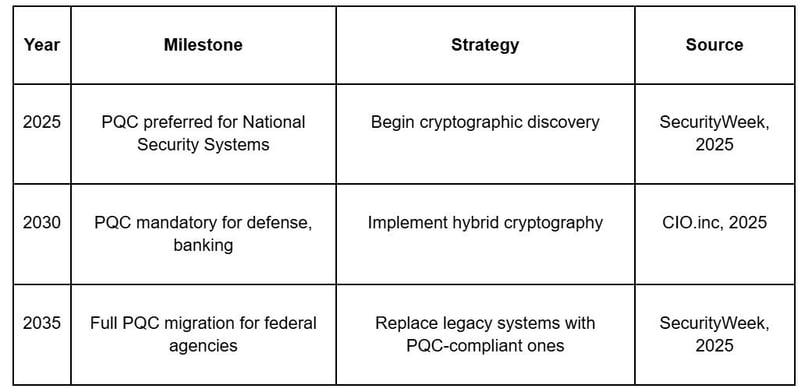Quantum Computing & Cybersecurity Threats in 2025
INNOVATIONLEADERSHIPBUSINESSTOP ARTICLES
Yamin Sarker
6/18/20255 min read


Quantum computing is no longer just a dream in 2025; it's a reality that is changing many fields, including finance and health care. But the promise of unmatched processing power also poses a threat to cybersecurity. Quantum computers could break old encryption methods, making sensitive data more accessible than ever. Entrepreneurs, leaders, and innovators need to understand and get ready for this change in order to protect their businesses and personal information. This article talks about the problems and chances that quantum computing brings to cybersecurity. It also gives useful tips on how to stay safe in a digital world that is changing quickly.
The Quantum Threat to Cybersecurity
Quantum computers use ideas like superposition and entanglement to solve hard problems much faster than classical computers. This power fuels innovation, but it also puts current cryptographic systems at risk. Quantum computers can solve math problems that algorithms like RSA and ECC use to protect everything from email to online banking. For example, Shor's algorithm can break down big numbers in polynomial time, which makes these systems weak (Phani Sekhar Emmanni, 2023).
According to a report from 2024, there is a 17–34% chance that a cryptographically relevant quantum computer (CRQC) will be able to break RSA-2048 by 2034 (Global Risk Institute, cited in SecurityWeek, 2025). This risk leads to the "harvest now, decrypt later" (HNDL) attack, in which enemies collect encrypted data now and decrypt it later when quantum computers are available (CIO.inc, 2025). Industries that deal with sensitive data that lasts a long time, like finance, healthcare, and critical infrastructure, are especially at risk.
Key Data: The Quantum Threat Landscape
Post-Quantum Cryptography (PQC): The Answer
Researchers are working on post-quantum cryptography (PQC) to protect against quantum threats. These are algorithms that can run on classical computers and are meant to be hard to break by quantum attacks. The National Institute of Standards and Technology (NIST) finished four PQC algorithms in August 2024. These algorithms, including Kyber and Dilithium, are meant to protect digital signatures and key exchanges (CIO.inc, 2025). These standards show a move from theory to practice, with industries like banking and defense leading the way because they have to follow them (IoT World Today, 2025).
But there are still problems to solve. A 2022 study showed that two NIST finalist algorithms could be broken with regular laptops, which made people worry about the reliability of PQC (MDPI, 2022). Even so, NIST's strict process makes sure that there is always scrutiny, and half of federal IT leaders are now planning PQC transitions (General Dynamics Information Technology, 2025).
Quantum Cybersecurity: What You Can Do
Quantum technology isn't just a danger; it's also a way to make things safer. Quantum key distribution (QKD) and quantum random number generation (QRNG) are two new technologies that use quantum mechanics to make communication "unhackable." In 2025, DRDO and IIT Delhi showed QKD over 1 km, which opened the door for secure quantum networks (X posts, June 2025). These improvements can keep sensitive business data safe and make people more confident in digital systems.
PQC Adoption Timeline and Strategies


How to Get Your Business Ready for the Quantum Age
You don't have to completely change your cybersecurity to make it quantum-resistant. Here are some things that business owners and leaders can do:
Make a list of all your cryptographic tools
Find systems that use weak algorithms, like RSA or ECC. A study from 2024 says that 35% of businesses are still in the discovery phase, which means they are mapping out important data that will be sensitive for a long time (CIO.inc, 2025). Use tools like Qualys or Tenable to check your encryption protocols.
Use Hybrid Cryptography
Use both classical and PQC algorithms to make sure they work together during the switch. For instance, both ECC and Kyber can be used for certificates (CIO.inc, 2025). Tip: Work with vendors like DigiCert that offer hybrid certificate solutions.
Take on Crypto-Agility
Make systems that can quickly switch between algorithms. This flexibility is very important because quantum threats are always changing (CybelAngel, 2025). Tip: Use modular security frameworks to change algorithms without making changes to the whole system.
Put money into quantum-safe technologies
Look into QKD or QRNG for applications that need a lot of security. In the finance sector, companies can use QKD to make transactions safe (IoT World Today, 2025). Tip: Look into companies like Quantinuum or Terra Quantum for early adoption.
Teach Your Team
Cybersecurity training cuts down on mistakes made by people, which were responsible for 23% of breaches in 2024 (Academia.edu, 2025). Tip: Sign up for free classes at the World Economic Forum's Cybersecurity Learning Hub, which taught more than 1.16 million people by 2024 (World Economic Forum, 2024).
Problems to Solve: Cost and Complexity: The U.S. government thinks that moving to PQC will cost $7.1 billion by 2035 (CybelAngel, 2025). Small businesses can use free tools like open-source PQC libraries to get started.
Uncertain timeline: A CRQC may not come about in 2025, but AI improvements could speed up quantum progress, shortening the timeline (SecurityWeek, 2025).
Old Systems: Many companies still use old infrastructure, which makes it harder to adopt PQC (CIO.inc, 2025).
Quantum Cybersecurity in the Future
According to Technology Magazine (2024), quantum technologies will be used by 80% of industries by 2030. This includes robotics and cryptography. Innovations like zero-vulnerability computing (ZVC), which gets rid of third-party permissions, might be able to offer quantum-resistant solutions that go beyond encryption (MDPI, 2022). At the same time, global efforts like the EU's Horizon program and NIST's standards are pushing people to work together to protect the digital future.
Conclusion: Do Something Now to Stay Safe
The quantum age is both a chance and a challenge. Companies can protect sensitive data and build trust by using PQC, looking into quantum-safe technologies, and encouraging crypto-agility. The message for readers of The Organic Image is clear: taking small, proactive steps today can protect your business tomorrow. What will you do first? Start with a cryptographic audit or a training session for your team.
References:
Phani Sekhar Emmanni. (2023). The Impact of Quantum Computing on Cybersecurity. Journal of Mathematical & Computer Applications. Retrieved from researchgate.net
SecurityWeek. (2025). Cyber Insights 2025: Quantum and the Threat to Encryption. Retrieved from securityweek.com
CIO.inc. (2025). Post-Quantum Cryptography 2025: The Enterprise Readiness Gap. Retrieved from cio.inc
IoT World Today. (2025). Quantum Cybersecurity in 2025: Post-Quantum Cryptography Drives Awareness. Retrieved from iotworldtoday.com
MDPI. (2022). The Future of Cybersecurity in the Age of Quantum Computers. Retrieved from mdpi.com
Academia.edu. (2025). Securing the Future: A Visionary Approach to Cybersecurity. Retrieved from academia.edu
World Economic Forum. (2024). How Tech Firms Are Tackling the Risks of Quantum Computing. Retrieved from weforum.org
arXiv. (2024). Cybersecurity in the Quantum Era: Assessing the Impact of Quantum Computing on Infrastructure. Retrieved from arxiv.org
X posts by @alpha_defense, @DefenceDecode, @c_aashish. (June 2025). Retrieved from x.com
CybelAngel. (2025). Quantum-Safe Cybersecurity: Essential CISO 2025 Guide. Retrieved from cybelangel.com


